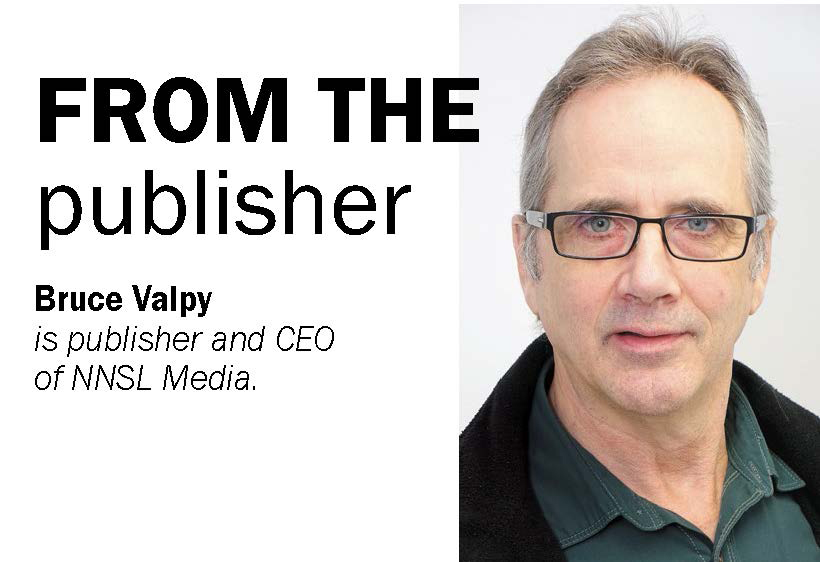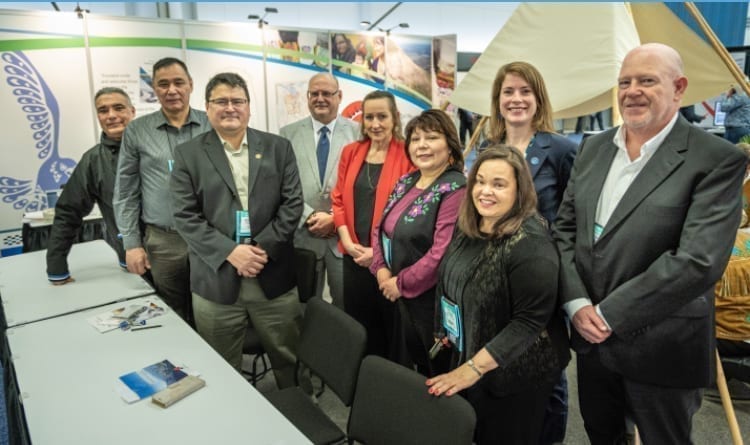 There has been heavy criticism of the mining industry in our opinion news pages lately, notably Yellowknifer columnist and community commentator Nancy Vail and Joan Kuyek, formerly national coordinator of Mining Watch Canada.
There has been heavy criticism of the mining industry in our opinion news pages lately, notably Yellowknifer columnist and community commentator Nancy Vail and Joan Kuyek, formerly national coordinator of Mining Watch Canada.
Both are excellent writers and passionate advocates of all that is good and righteous in this day of climate change. Vail in her column Our own banana republic is dead set against mining while Kuyek in the story "Former head of mining watchdog calls for NWT to change industry" attempts to walk the line between being anti-mining and only allowing mining that doesn’t damage or alter the environment, certainly falling on the side that less mining is infinitely better than more mining, no mining is best.

photo courtesy of the Government of the Northwest Territories
Good reading but I’m left wondering where these thoughtful advocates are coming from when I read this week’s News/North. On pages 10 and 11: The headline on page 10 is Indigenous self-determination in mineral sector gets a boost. The page 11 headline is 83 percent of NWT inmates are Indigenous. Download the paper here if you didn’t see it - NWT News/North Jan. 24, 2020.
On page 10, Gwich’in Tribal Council Grand Chief Bobbie Jo Greenland-Morgan and Inuvialuit Regional Corporation chair Duane Smith signed off on GNWT regional mineral strategies designed to allow those Indigenous governments to develop their mineral resources.
Are these Indigenous leaders ignoring the climate change threat? Do they not care what mining can do to the land and animals? Are they being bamboozled by royalty hungry GNWT politicians and their mining industry lobbyists? Are they being immoral as Vail suggests? Naive, as Kuyek explains?
I think Greenland-Morgan and Smith are looking at the needs of their people. Reluctantly, guardedly, they are weighing the benefits of raising money from the resources under their control rather than depending on colonial governments not in their control. Clearly, relying on the colonial powers leads to perpetual poverty for the majority of their people. They see substandard housing resources, a broken education system, a social safety net that causes dysfunction and encourages dependence and now - not new news - a child rescue service that fails both the child victim and the family volunteers stepping up to help them.
In the second story, the local angle on the national story about the percentage of Indigenous representation in the Canadian inmate population - 30 percent - and climbing. If that number is newsworthy, what are we to make of 83 percent in the NWT?
Vail doesn’t mention the thousands of Indigenous people in the NWT who have no jobs or even hopes of getting a job. Kuyek suggests: “You could be building your own housing. You could be growing your own food. You could doing innovative forms of transportation for the North.” So build your own house. Learn about the alternative energies out of reach. Live the carbon neutral way in a place where carbon = heat for you or your family.
I consider myself an average non-Indigenous person. I would have no idea how to build a house other than moving into the crate the material arrived in and burning everything else to keep warm. Growing my own food would not be an option because I don’t know how to do that eight months of the year with paying for heat. What are 'innovative forms of transportation’? These are not practical solutions for any population.
So to further the discussion brought forward by Vail and Kuyek: How do we address the implications for Indigenous people if we forbid their government to engage in resource extraction for royalties on their land? What’s left but revenue from the federal/territorial governments, the status quo?
The GNWT seems to have learned that sound planning includes partnership, as signalled with these agreements.
Resource development offers Indigenous governments the ability to top up services hugely lacking from the federal/GNWT funding stream. Premier Caroline Cochrane and minister of Industry, Tourism and Investment Katrina Nokleby are doing the right thing by helping that happen.
The present project screening boards, singled out for praise by Kuyek, are doing the job on the environment front. Add the Indigenous economic factor and weight it toward self-sufficiency. The boards should be a catalyst for responsible economic development, not yet another barrier to Indigenous self-determination..
Without new approaches and recognition of the challenges facing the Indigenous populations in the NWT, change is just a dream, to be followed by a Northern nightmare, if we don’t change.